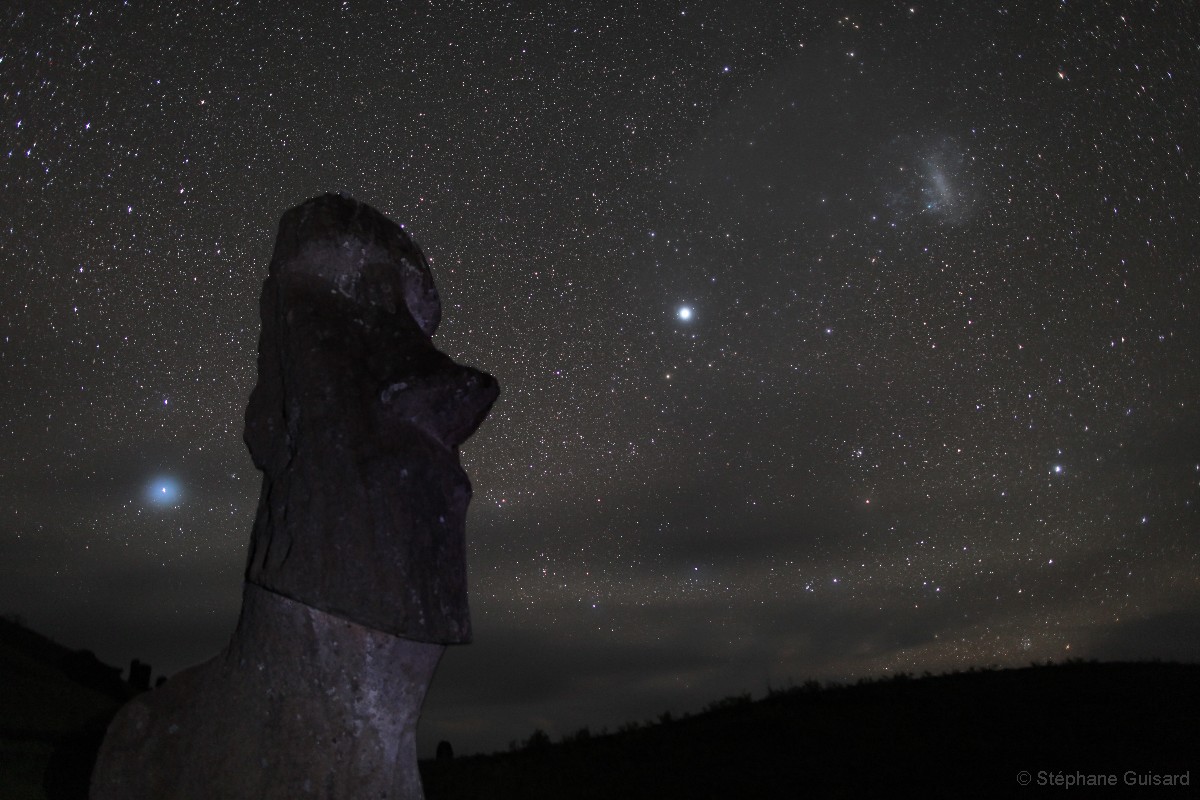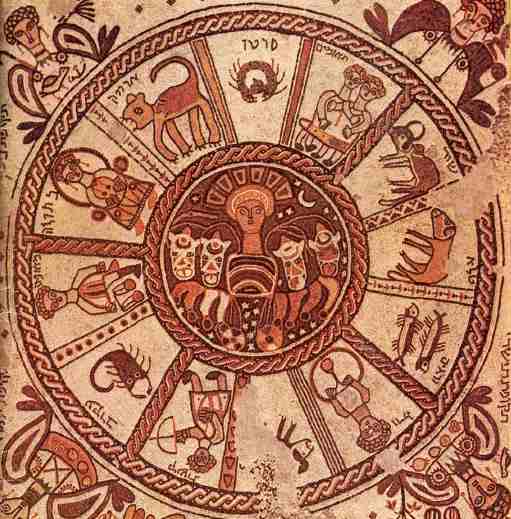 |
| Large Magellanic Cloud, bright Canopus and Sirius rise behind Moai Piro Piro from Los Cielos de Chile, Rapa Nui (Easter Island) |
by Stephane Guisard
___________________
“There, peeping among the cloud-wrack above a dark tor high up in the mountains, Sam saw a white star twinkle for a while. The beauty of it smote his heart, as he looked up out of the forsaken land, and hope returned to him. For like a shaft, clear and cold, the thought pierced him that in the end the Shadow was only a small and passing thing: there was light and high beauty for ever beyond its reach.”
- J.R.R. Tolkien, The Return of the King
___________________
___________________
Ophiuchus!? What now?
via Sagan's Brain
 |
| 6th century zodiac wheel, Beit Alpha, Israel |
This story is just so silly in a variety of ways. For one thing, it wasn't actually news. The Earth's precession doesn't happen overnight, and astronomers haven't just discovered it (read this discussion of the problem by Phil Plait way back in 2008).. In the words of Sam Cooke, it's been a long time coming. Then there was the panic and irritation that the traditional signs are all wrong (HuffingtonPost cleverly examined the Earth-shattering consequences of this shift).
Soon after this news, astrologers came to the rescue. Nothing to fear, they said. The Ophiuchus shift only applies to Sidereal Astrology, not Tropical Astrology. Most believers probably don't know the difference, but don't worry, we westerners typically believe in Tropical Astrology, which is unaffected. "Ophiuchus only affects those who were born 2009 onwards. If you're born before 2009, the sign stays the same." That's a relief.
The signs originated from the constellations, but are not the same thing. The signs are composed of 12 equal subdivisions of the sky, each 30 degrees in extent. The constellations are not laid out in such an orderly fashion.
There are thirteen astronomical constellations that cross the ecliptic. Whenever you refer to the zodiac use the number thirteen and name the constellations of the ecliptic (see Table #l). If someone complains that these are not the right constellations, just point out that all constellations are arbitrary and strictly artificial. The ones we use are the official constellations of the International Astronomical Union.
So, if Ophiuchus occupies more of the ecliptic than Scorpius, why is it not in the astrological zodiac instead of Scorpius? Ancient astronomers did not place Ophiuchus on the ecliptic; it is the modern construction of official constellation boundaries that gives it so much territory across the ecliptic. Since they are rather arbitrary boundaries, it doesn't make much difference. Most likely, it's because Ophiuchus is not a particularly bright constellation, while Scorpius is a very bright, vivid group of stars that really does look like a scorpion.
It remains to be seen whether the new dates for the 12-sign zodiac will be adopted, whether we'll keep the dates as we have come to know them, or whether we'll switch over to the new 13-sign zodiac.
___________________
| Stars over Templo V, Tikal |
wildcoyote

FYI the 13 sign Zodiac is what is currently accepted.
ReplyDeleteIt will continue to be so until it leaves the ecliptic again (and only counts for those born during this time).
ReplyDelete